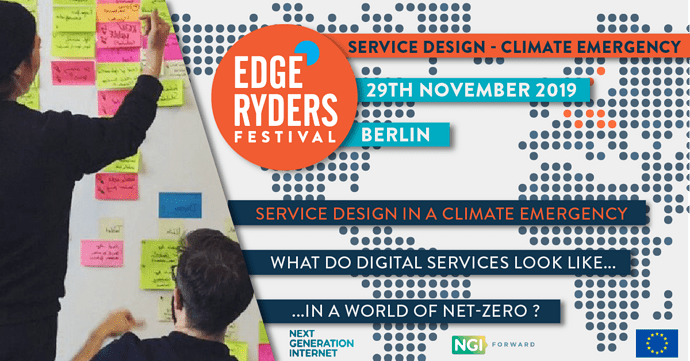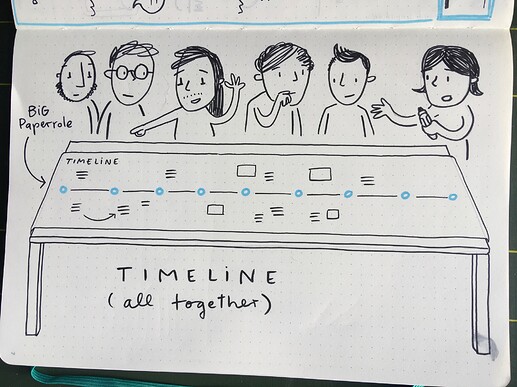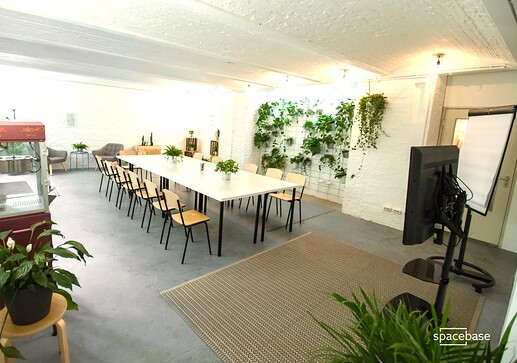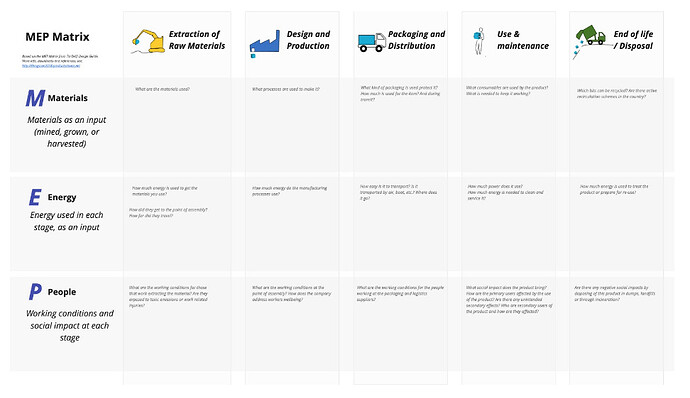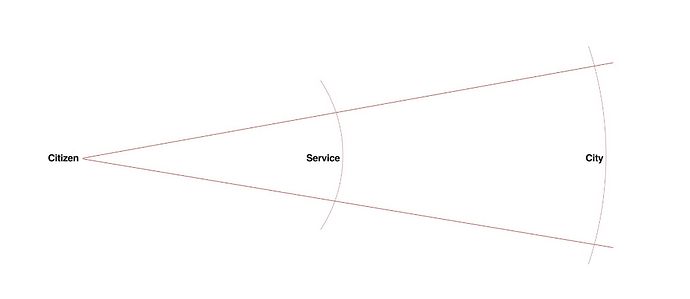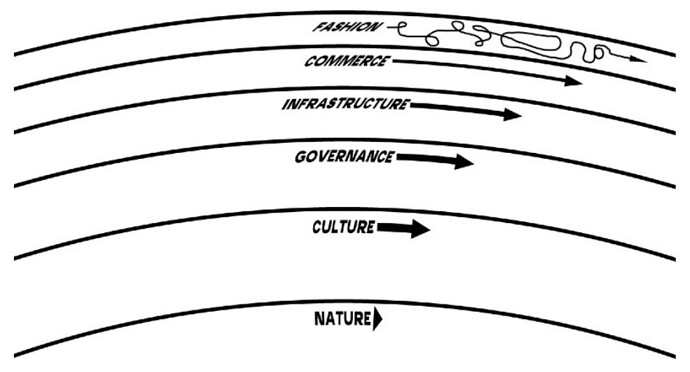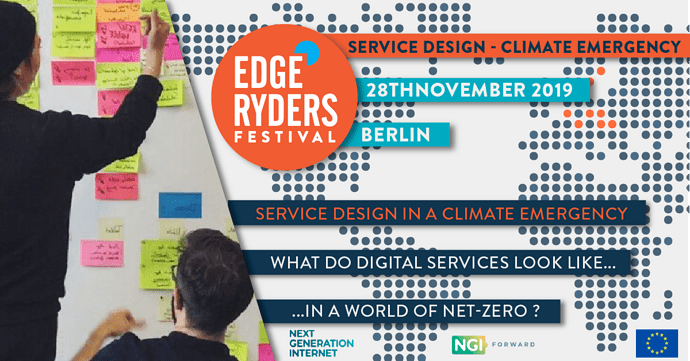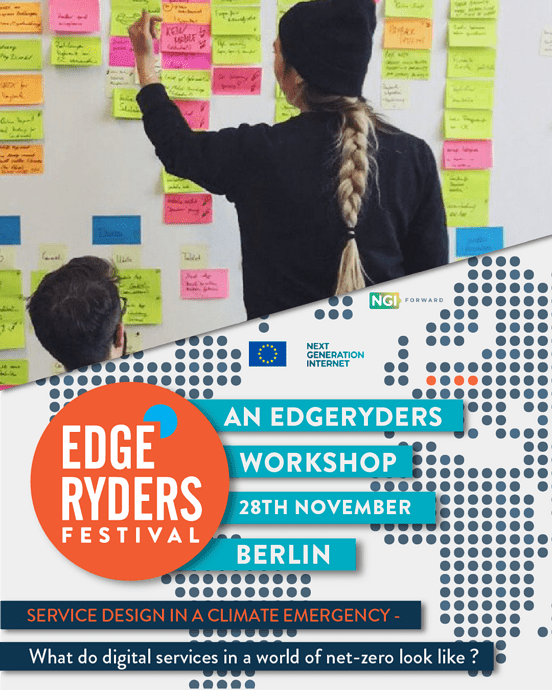2019-11-28T23:00:00Z → 2019-11-28T23:00:00Z
Location: Berlin
Organiser: Chris Adams, Kathryn Hing
Our climate is changing, kids are striking for the future every Friday, and put simply, our house is on fire.
How can we respond as practitioners designing and delivering the services people rely on? And what skills will we need that we don’t have, and need to invest in learning?
We’ll need more than hope and courage if we want to rise to the scale of the challenge facing us - we’ll need to invest in specific skills, and learn to use an expanded vocabulary that includes concepts related to climate, carbon, and equity.
Join our workshop in Berlin on Friday 29th to figure out what service design might look like in world of net-zero, and identify what we’ll need to know as professionals to get there.
You can register here:
https://register.edgeryders.eu/
The general plan:
We’ll have a slide deck with the running order on the day, but here’s the pictorial, short version:
We’ll wrap up, listing where in the stage of a project these different tools and approaches can be used to make changes to how we work.
Where we’re running this workshop:
We have a space on the ground floor, near Spacebase in Kreuzberg.
Here’s the address:
- Muskauer Straße 24, Berlin
Don’t worry, we’ll be sending more specific directions to attendees
What do digital services in a world of net-zero look like ?
We increasingly see service design as a tool for governments, companies and the third sector to help people meet needs they might have, and rethink how we structure organisations to support them.
In fact some, like Matt Edgar have gone further::
Most of government is mostly service design most of the time.
Great strides have been made, in making services more legible to end users, but also deliver the required outcomes more effectively, often costing less to do so.
But in 2019, and a world where our climate imposes far reaching changes to how we live, we’ll also likely far reaching changes to how services are delivered to people, with new consequences we’re not used to dealing with.
How do we avoid the unintended consequences in a world of binding legal carbon reduction targets?
If we listen to the science, and follow the trends of carbon reductions being written into law, like we saw with the UK, and Denmark, and New York this year, we have a significant changes ahead of us in how we deliver services, as we won’t have the resources available to us that we used to.
And an environment where we have constrained resources, it’s easy to imagine us ending up with needing to radically redesign services to fit these constraints.
Right now, the the scale of the reductions needed are so huge, and because we already have a bias towards what we can already measure, it’s not hard to imagine people using metrics like the cost per transaction to set the parameters service designers have to work within.
We already see it in some countries where there is a developed service design industry:
It’s also relatively simple to shift from measuring cost in money to cost in carbon.
For example the Office of National Statistics in the UK already measures things like carbon intensity for different sectors, to have proxy figures for CO2 emissions.
If by law you are compelling to reduce emissions, and you know that expenditure in a given sector emits a set about of emissions for every 10k of spend, you have implicit budgets already set.
There’s a danger in this approach, that we end up leaving great swathes of people behind - while this approach is easy to measure and manage, it’s also a very blunt instrument, especially when within industry, we know that our knowledge about how to do almost anything in a measurably low carbon way is so poor.
What can we use to explore the impacts of service design to highlight unintended consuquences and risks early?
So, one goal is workshop is partly to explore what is out there, to come up with a vocabulary to talk about service design, so we can talk about reducing carbon emissions in how we work, so we have names for patterns the same way when we talk about channel shifting, we know it entails.
But there is also a second goal of being able to talk about the trade-offs we make when doing so, so we can avoid the unintended consequences of how we might work.
Finally, there is a need to help share knowledge about what kinds of tools or probes are effective in reaching these first two goals
Prior work we might discuss, or share experiences of using
Inspiration from industrial product design
There are tools and frameworks for product design, to help us understand the non-monetary impacts of what we build.
Below is a Materials, Energy, People Matrix, proposed by Dr Isabel Ordonez, as a tool based on the more common MET (Material, Energy Toxicity) matrix used in industrial design education.
It’s designed to help guide a systematic review of the impacts of a making a product, in each use-phase of it’s existence, and can be used for a very quick life cycle analysis/assessment.
It’s a useful framework for thinking about the impact of products, and it share the same approach of splitting the use of a product that journey maps, and experience maps like below, that we have for service design.
Comparable tools in service design
We already have some tools that help us talk about phases of use or experience when we think about designing services.
But if there are few tools to support discussion of the environmental or social impacts the way a MEP matrix might, discourse and experience reports are even rarer.
Also, while user-centred design is increasingly common, we have few tools for designing for people who are not the primary users of services, a key consideration when designing for the wider environment.
For example, Airbnb is a great example of user-centred design for the end user.
It’s a less successful example of design for the neighbour of a person hosting an apartment, or less visible people, like the cleaners and other workers who are also part of the supply chain.
One possible way to frame this has been the citizen - city continuum proposed by Dan Hill when describing how we design services in future.
Another visual model, is is Stewart Brand’s pace layers, initially used for architecture, to help architects think about the changes they might make to a building, to make the space better suited for it intended purpose.
Similar to how you might design with these pace layers in mind when designing an architectural intervention in a space, you might do something similar when designing services.
You might deliberately, and explicitly make changes to a service in ways that refer to different layers, given a finite budget of financial and social capital.
Possible outputs from the workshop
1. A greater understanding where we need to describe and create patterns, so we have the words to talk about service design in the context of carbon reductions.
A gap analysis informed by experience reports from practitioners, about what are the key issues needed to explore - this might confirm the initial ideas in this workshop, or bring up other key ideas related to service design in a climate emergency.
Workshop note: An activity like 1-2-4-All from Liberating structures would be a tried and tested, well documented way to get rich feedback from a mixed group of participatants when looking to answer a specific question
1-2-4-All can be run very quickly, but often around 40mins to an hour is set aside to explore a single question
2. A survey of the existing activities, frameworks and tools available to designers, and where they are useful.
This would help understand which questions the tools and frameworks we have available are suited to answering, which ones they aren’t. Being able to check these common tools we know against the key challenges identified in the first output would let give us an idea of what new tools might look like.
Workshop note: you might use an activity like [post-up] in groups to generate a list of the tools and frameworks, represented by sticky-notes, before removing duplicates in a shared list created by combining the groups.
You might then plot these on some kind of visual axis, or diagram for where they are effective, like the ones presented above from user - city continuum from Dan Hill, or the pace layers Steward Brand, or another relevant model.
This would provide the basis for creating the next output.
Depending on how much time you might allow for discussion, how many groups you work in, and how large a shared list is, this might take between 30-90 minutes
3. Some visual representation of the issues and which tools described might be useful.
Earlier designers and thinkers have explored questions like this before - their diagrams or visual models are useful tools, and spending time to sketching out some ideas during the day, that might build on this may be similarly useful.
This will highlight directions for future research, or development of prototype tools to aid in discussions.
Workshop note: Once the groups have had a chance to explore the issues, and try using some existing visual models or diagrams, using an approach like design studio, or crazy 8’s to come up with a large number low fidelity visual models or diagrams, before refining and reducing these to a smaller number of higher quality diagrams would help create with the creation of future tools, mental models or frameworks, to share, and try out in future projects.
A design studio exercise like this might typically take between 30-60 mins
Related projects:
Wishlist
Which skills would we like to have in the room?
- Service design skills, particularly working in public sector in Europe, and private sector
- Policy design and experience, particularly for delivering carbon reductions in government services
- Digital skills, for implementing digitally mediated aspects of a service, like building digital platforms designed to support a channel shift away from manual ones that relied on paper
- Skills and experience at working with vulnerable groups (or people from those groups themselves), often impacted by the unintended consequences of people taking steps to ‘green’ a service.
Are there specific organisations whose contributions would be helpful?
- The folks behind the Global Design Jam Series have experience facilitating events, and are often staffed by professional service designers
- There is a unit at TU Berlin focussed on “sustainable digitalisation” - their contributions would be useful
- Groups like Tactical tech or Engine Room, have experience working with groups who are often vulnerable, and marginalised, and have put work into helping organisations understand how their efforts might unintentionally harm the people they are trying to help
- In Berlin, groups who are working to build digital services that displace more polluting alternatives would be useful to have present, as they can talk about the trade-offs they need to make, when operating commercially. Examples might be mobility services companies like the ones running Coup, Emmy, and so on
Questions to explore
-
What do digital services in a world of net-zero look like ?
-
How do we avoid the unintended consequences in a world of binding legal carbon reduction targets?
-
What can we use to explore the impacts of service design to highlight unintended consequences and risks early?
Frequently asked questions
How do I get an invitation/ticket to this workshop?
Complete the registration form: https://register.edgeryders.eu/
How is this event being organised?
This event, and the festival it is part of, is coordinated on the edgeryders platform (where you are now) and co-curated through a series of community video calls. We have allocated a collaboratively managed budget for the festival and operate on a solidarity basis. Participants who need some financial support to organise or be able to participate in the festival are eligible provided they contribute towards making it a meaningful and generative experience for all - in the run up to, during and/or after the event. If you would like to join us but are unsure as to how to contribute, don’t worry. Create an edgeryders account, then tell us a bit about yourself here and we will guide you along from there.
How is this all financed?
This event is part of the NGI Forward project Generation Internet (NGI) initiative, launched by the European Commission in the autumn of 2016. It has received funding from the European Union’s Horizon 2020 research and innovation programme under grant agreement No. 825652 from 2019-2021. You can learn more about the initiative and our involvement in it at https://ngi.edgeryders.eu


Does getting involved mean I endorse the funders views or actions?
No. What you are doing is contributing to an open consultation on the topic of how to build a next generation of internet infrastructure, technologies, business models etc that promotes the wellbeing of humans and the natural environment. The consultation methodology is designed in such a way as to allow for diversity of views, premises, disciplines, themes and contexts. We employ open notebook science principles and the results will be presented in the form of a research report accessible to everyone after the event. You can follow the process, review the methodology and open source tech we are using and engage directly with the research and coordination team here: https://edgeryders.eu/c/ioh/workspace
What is the code of conduct?
It is important to us that everyone in the room feels welcomed and safe; if you have any particular concerns or needs just send me a PM here on the platform or write to nadia@edgeryders.eu .
The Edgeryders online platform technology and activities are intended for people to cooperate within and across projects trying to build a better world. The word “better” has here a fairly broad range of meaning. These Community Guidelines are here to help you understand what it means to be a member of Edgeryders. Don’t forget that your use of Edgeryders is subject to these Community Guidelines and our Terms of Service.
What happens with my data?
You can read about our Terms of Use and Privacy Policy here. Also:
- Regulation (EU) 2016/679 of the European Parliament and of the Council of 27 April 2016 on the protection of natural persons with regard to the processing of personal data and on the free movement of such data, and repealing Directive 95/46/EC (General Data Protection Regulation) (Text with EEA relevance)
- Directive 95/46/EC of the European Parliament and of the Council of 24 October 1995 on the protection of individuals with regard to the processing of personal data and on the free movement of such data
- Handbook on European Data Protection directive
- European Commission website - Protection of personal data
